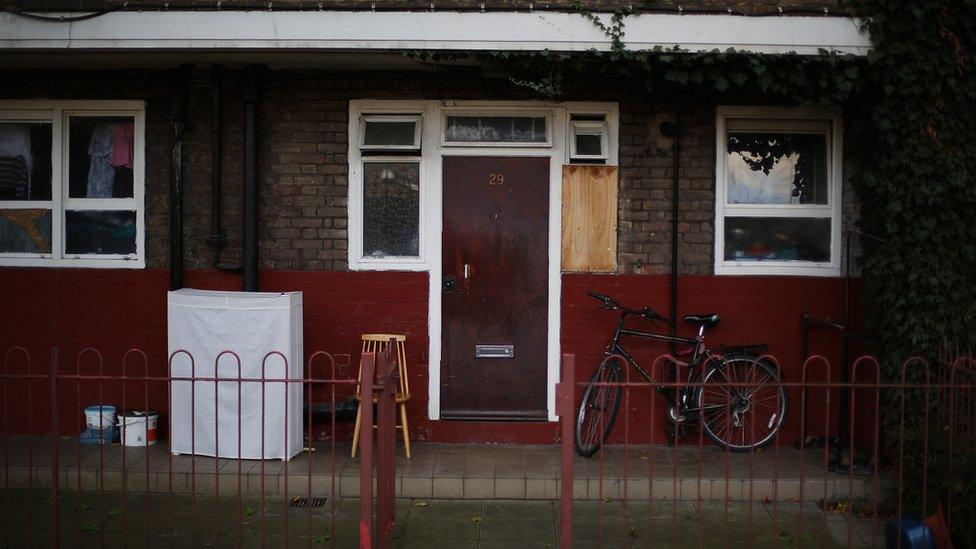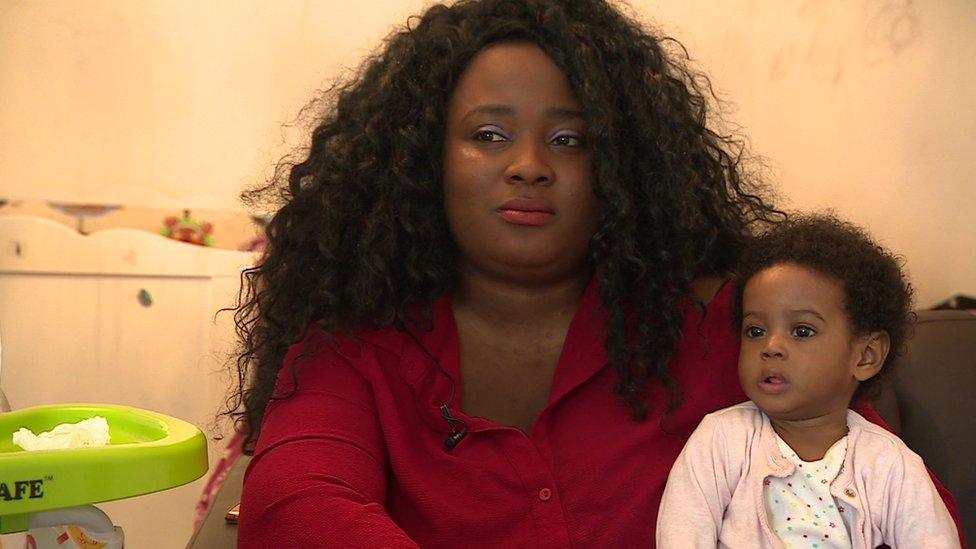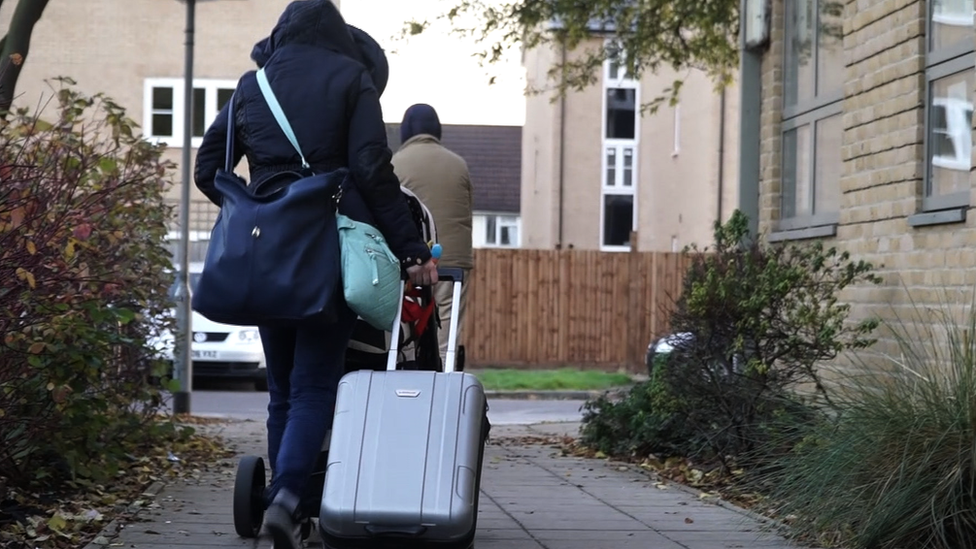Homeless families rehoused out of London 'up five-fold'
- Published

Many more families are being moved outside London by councils
The number of homeless London families placed in temporary accommodation outside the capital has risen five-fold since 2012, figures show.
Families have been placed as far away as Manchester, Leeds and Newcastle.
The number of placements rose from 113 between April and June 2012 to 551 between December and April 2016, figures from London Councils (LC) show.
Authorities say they are forced into this by rising temporary housing costs, which have also doubled since 2012.
London boroughs spent £203m on housing rented on a per-night basis in the 2015 financial year, up from £90m in 2011, the figures from LC, which represents city authorities, indicate.
'No choice'
Kate Webb, head of policy at housing charity Shelter, explained high London property prices mean "councils are finding it much harder to find landlords that will work with them".
Councils are struggling to secure long term leases on properties to use for temporary accommodation, so are forced into per-night rental agreements, or to look beyond the capital, she said.
The number of nights rented under these arrangements has more than tripled from 540,000 to 1.8m over the past five years, 14 councils in London confirmed.
"Because councils can't find anything affordable and suitable in their own local area, then they do often have no choice but to look to cheaper areas outside of the capital," Ms Webb said.

'I feel like I have been abandoned'

Abigail Tumfo has spent three years in temporary accommodation
Abigail Tumfo was placed by Waltham Forest Council in Hertfordshire, after being evicted by a landlord who did not want a child in his property.
"The council told me they didn't have anything apart from a studio apartment in Welwyn Garden City."
She explained her support network of family and friends has been stripped away by the move.
"I feel like I've been abandoned. I've been here for three years, now, and I'm still here, the council are still not doing anything to move me back to where I'm from," she said. "It's like my life has been put on pause."
She said her accommodation was in poor shape, that other residents in the building were disruptive, and has had to spend much of her income on commuting to London for work.
"I've had to deal with mould, I've had to deal with cockroaches, I've had to deal with crazy people banging on doors at night, breaking through people's doors," she said.
"It's been a hell living in this place, for me and my kids. My eldest thinks this is normal but I know this isn't a normal life for her. I know there is something better out there, that she doesn't deserve this kind of life."

Housing departments have been considering alternative solutions to the shortage of properties.
Converting former industrial units into temporary accommodation, and building prefabricated, modular housing on council-owned land, are among ideas discussed at meetings between council housing officers, according to documents released by LC.
But cost increases are forcing London boroughs to look further afield for temporary accommodation.
Most of these families were sent to towns in the south-east such as Thurrock, Medway and Luton, though a number of families were housed in Greater Manchester and the West Midlands.
'Last minute'
There has also been a rise in the number of families moved to another borough within London. While 2449 families were placed outside their borough between June and September in 2011, this rose to 4883 between December and March 2016, the figures show.
David Smith, policy officer at the Residential Landlords Association, said: "One of the biggest problems that councils have is that they are not addressing people being evicted from properties quickly enough."
He explained councils tend to leave people in a property to the very last minute, before looking for short term emergency housing solutions.
"If that was being addressed more quickly, then these expensive temporary housing solutions could be avoided," he said.
'Housing crisis'
Sir Steve Bullock, executive lead on housing for London Councils, and Mayor of Lewisham explained why councils were struggling.
"We have more people who need housing, in this case short term temporary accommodation, than we are able to access in London, because of the London housing crisis that we all know about," he said.
He explained that councils were having to both deal with families in need of immediate emergency accommodation, and to provide housing in the longer term.
"Most of us are trying to juggle both things, and to do both, but I can understand why when we are dealing with this very immediate issue of homelessness, it does look like we are fire fighting, but we are also looking at the long term," he added.
A Waltham Forest Council spokesperson said the council was aware some residents in the building that Abigail Tumfo is currently living in have raised concerns about delayed repairs in the past, but was aware of no ongoing issues.
"Securing safe and secure temporary accommodation for residents most in need is our top priority, and whenever possible we will place families close to their school and work," the spokesperson said.
"Due to a shortfall of available properties and rising rents in the private rental market in the capital we, like other councils across London, have no option but to place some applicants in temporary accommodation outside the borough."
The BBC sent freedom of information requests to all London boroughs on the costs of their nightly charged temporary accommodation.
Twenty boroughs provided full information, though some responses also included nightly paid, shared accommodation.
- Published31 March 2017
